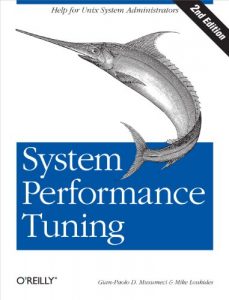System Performance Tuning answers one of the most fundamental questions you can ask about your computer: How can I get it to do more work without buying more hardware? In the current economic downturn, performance tuning takes on a new importance. It allows system administrators to make the best use of existing systems and minimize the purchase of new equipment. Well-tuned systems save money and time that would otherwise be wasted dealing with slowdowns and errors. Performance tuning always involves compromises; unless system administrators know what the compromises are, they can't make intelligent decisions.Tuning is an essential skill for system administrators who face the problem of adapting the speed of a computer system to the speed requirements imposed by the real world. It requires a detailed understanding of the inner workings of the computer and its architecture. System Performance Tuning covers two distinct areas: performance tuning, or the art of increasing performance for a specific application, and capacity planning, or deciding what hardware best fulfills a given role. Underpinning both subjects is the science of computer architecture. This book focuses on the operating system, the underlying hardware, and their interactions. Topics covered include:
- Real and perceived performance problems, introducing capacity planning and performance monitoring (highlighting their strengths and weaknesses).
- An integrated description of all the major tools at a system administrator's disposal for tracking down system performance problems.
- Background on modern memory handling techniques, including the memory-caching filesystem implementations in Solaris and AIX. Updated sections on memory conservation and computing memory requirements.
- In depth discussion of disk interfaces, bandwidth capacity considerations, and RAID systems.
- Comprehensive discussion of NFS and greatly expanded discussion of networking.
- Workload management and code tuning.
- Special topics such as tuning Web servers for various types of content delivery and developments in cross-machine parallel computing






